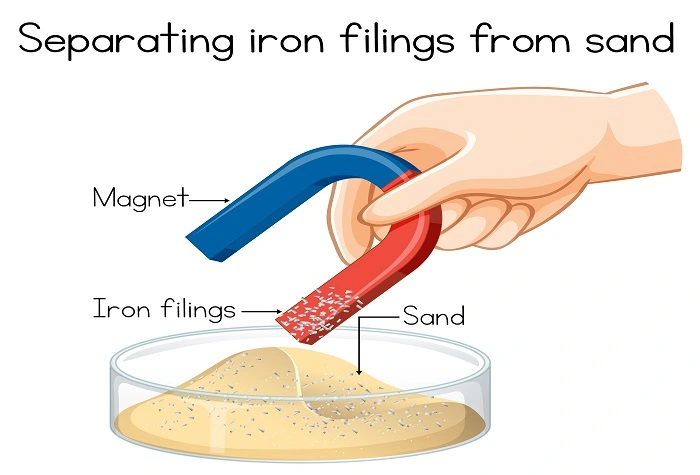Teaching children about the fascinating concept of magnetism is an essential part of their early science education. While it may seem like a complex topic, introducing magnetism to children in a fun and engaging way can have numerous benefits for their cognitive development.
Understanding magnetism is crucial because it is a fundamental force of nature that influences various aspects of our daily lives. From the magnets on our refrigerator doors to the technology we use, magnetism plays a significant role. By introducing children to magnetism, we empower them to comprehend and interact with the world around them more effectively.
Benefits of understanding magnetism at an early age
Enhanced scientific literacy: Introducing magnetism to children at an early age lays the foundation for a lifelong interest in science. By grasping the basics of magnetism, children develop a curiosity for other scientific concepts, sparking their interest in exploring the natural world further.
Cognitive development: Learning about magnetism promotes critical thinking, problem-solving, and spatial reasoning skills. Children engage in hands-on activities and experiments, stimulating their cognitive abilities and fostering their overall intellectual growth.
Real-world applications: Understanding magnetism enables children to make connections between scientific concepts and their practical applications. They begin to recognize how magnets are used in various technologies, such as speakers, electric motors, and even medical imaging devices. This knowledge helps children develop a deeper appreciation for the wonders of science and technology in their everyday lives.
Everyday examples of magnetism

Magnetism is all around us, shaping our daily lives in ways we might not even realize. By exploring everyday examples of magnetism, we can help children understand and appreciate the pervasive influence of magnets in our world. Let’s take a closer look at some common instances of magnetism that children can easily relate to.
Magnetic objects in the home: Step into any household, and you’re bound to encounter various magnetic objects. Refrigerator magnets, for instance, adorn the doors of our fridges, displaying important notes, photos, or artwork. These magnets stick to the refrigerator due to the attractive force between the magnet and the metal surface.
Children can also discover magnetic properties in other household items. Many cabinet doors and drawers use magnets to ensure a secure closure. They can experiment with magnets to identify which objects in their home are attracted to them, thereby recognizing the presence of hidden magnets in everyday objects.
Magnetic materials in daily life: Beyond specific objects, numerous materials exhibit magnetic properties. Children can explore these materials and discover their magnetic properties firsthand. One such material is iron. Encourage children to use a magnet to test objects made of iron, such as paper clips, nails, or screws. They’ll observe that these objects are attracted to the magnet. By contrast, non-magnetic materials like plastic or wood won’t show any attraction.
Explaining the basics of magnetism to children

Introducing children to the basics of magnetism by engaging them in hands-on activities and simple experiments, can make magnetism come alive and spark their curiosity. Let’s explore some effective methods for explaining the fundamentals of magnetism to children.
Introducing attraction and repulsion: One of the fundamental aspects of magnetism is the attraction and repulsion between magnets. Children can grasp this concept by conducting simple experiments with magnets.
Start by providing your children with two magnets. Show them how the magnets attract each other when the opposite poles (north and south) are brought close together. Explain that opposite poles attract each other, just like two opposite sides of a magnet pulling towards each other.
Next, demonstrate the repulsion between magnets by attempting to push together the same poles (north to north or south to south). Children will observe that the magnets resist coming together, pushing each other away. Explain that like poles repel each other, as if they are two sides of a magnet that don’t want to touch.
Demonstrating the magnetic field using iron filings: To help children visualize the magnetic field surrounding a magnet, a simple yet captivating demonstration can be done using iron filings.
Provide a shallow tray or a piece of paper and place a magnet underneath it. Then, sprinkle iron filings evenly over the tray or paper. As the filings settle, they will align themselves along the magnetic field lines, creating a beautiful pattern that outlines the magnetic field around the magnet.
Children can observe the pattern and see how the iron filings cluster near the poles of the magnet where the magnetic field is strongest. This demonstration allows them to visualize the invisible force of magnetism and understand its influence in the surrounding space.
Teaching magnetism through fun activities

Learning about magnetism doesn’t have to be limited to textbooks and lectures. Engaging children in hands-on activities is an excellent way to make the learning process more enjoyable and memorable. Let’s explore some exciting activities that can help teach magnetism to children in a fun and interactive way.
Magnetic scavenger hunt: A magnetic scavenger hunt is a thrilling activity that encourages children to explore their surroundings and discover the hidden magnets in everyday objects. Here’s how you can organize this engaging activity:
- Prepare a list of items that may or may not contain magnets. Include a variety of objects like paper clips, coins, refrigerator magnets, toys, and household items.
- Give your child a magnet or a magnetized wand.
- Encourage the children to search for items on the list and use their magnets to determine whether the objects are magnetic or not.
- As they find magnetic objects, have them check off the items on their lists.
This activity not only familiarizes children with the concept of magnetism but also sharpens their observation skills. It allows them to actively engage with their environment and develop a deeper understanding of magnets’ presence in everyday life.
Creating a homemade compass: Making a homemade compass is a fantastic activity that not only introduces children to magnetism but also connects it to the earth’s magnetic field. Here’s a step-by-step guide to creating a simple homemade compass:
Materials needed: Small bowl or container, water, cork or small piece of foam, sewing needle or straight pin and magnet
- Fill the bowl or container with water.
- Rub one end of the needle or straight pin against a magnet in one direction around 20 times. This magnetizes the needle or pin.
- Gently place the magnetized needle or pin onto the small piece of cork or foam. Make sure it floats in the water without tilting or sinking.
- Place the cork or foam with the needle or pin into the water-filled bowl.
- Observe as the needle or pin aligns itself in a north-south direction, pointing towards the earth’s magnetic north pole.
By creating their own compass, children can witness firsthand how a magnetized needle aligns with the earth’s magnetic field. This activity not only teaches them about magnetism but also introduces them to the concept of navigation and the earth’s magnetic poles.
We hope that this article will facilitate your efforts in conveying the concept of magnetism to your children more effectively. Looking for online Science tuition to help your children understand concepts surrounding their Science lessons better? Visit https://www.88tuition.com/ to know more.
Exam Smart Tips
Exam Smart Tip #1 – How to Encourage Our Kids to Speak Better?
Exam Smart Tip #2 – How to avoid carelessness?
Exam Smart Tip #3 – Establishing Routines!
Exam Smart Tip #4 – Let’s Read Carefully!
Exam Smart Tip #5 – Beating the Exam Fever!
Exam Smart Tip #6 – How to Eat Right for the Exams?
Exam Smart Tip #7 – How to Avoid a Meltdown?
Exam Smart Tip #8 – Taking Stress out of Tests
Who We Are
Mission statement – “Empower every student to achieve full potential”
88tuition Pte Ltd offers the best PSLE Tuition Singapore for children looking to ace the PSLE exam. With effective learning materials and high-quality explanatory videos by experienced trainers, children are provided with the best online PSLE tuition.
With the basics learnt well, children will be able to grasp advanced concepts easily. Looking for the best PSLE math tuition, PSLE Science tuition and PSLE English tuition in Singapore? 88tuition has got you covered. The online training videos and assessments are designed in a way that children are made to enjoy the learning process.
UEN 201817310C
271 Bukit Timah Road; #03-08; Singapore 259708



